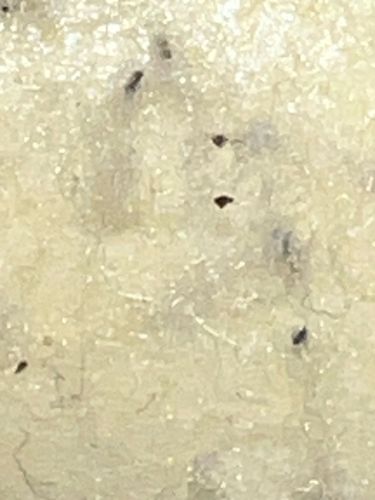Mold Mites
Scientific Name: Tyrophagus putrescentiae (a common species, though exact species is hard to determine from image)
Order & Family: Acariformes, Acaridae
Size: 0.3 - 0.7 mm

Natural Habitat
Damp, humid environments with a food source of fungi or decaying organic matter. Found in stored food products (grains, cheese, dried fruit), detritus, and sometimes in household dust.
Diet & Feeding
Primarily feed on mold, fungi, and yeasts. They can also feed on decaying plant or animal matter, and sometimes on the germ of stored grains.
Behavior Patterns
Mold mites are very small and often go unnoticed until their populations are quite large. They thrive in high humidity (above 65% relative humidity) and moderate temperatures. They are not typically fast-moving. Their presence often indicates excessive moisture and mold growth. They reproduce quickly under ideal conditions.
Risks & Benefits
Risks: Can be a pest of stored food products, leading to spoilage and economic losses. In some individuals, exposure to large numbers of mites or their faeces can cause allergic reactions, including asthma, dermatitis (baker's itch), or rhinitis. They do not bite or transmit diseases to humans directly. Benefits: As decomposers, they play a minor role in breaking down organic matter, but their presence is generally seen as a nuisance or pest.
Identified on: 10/12/2025